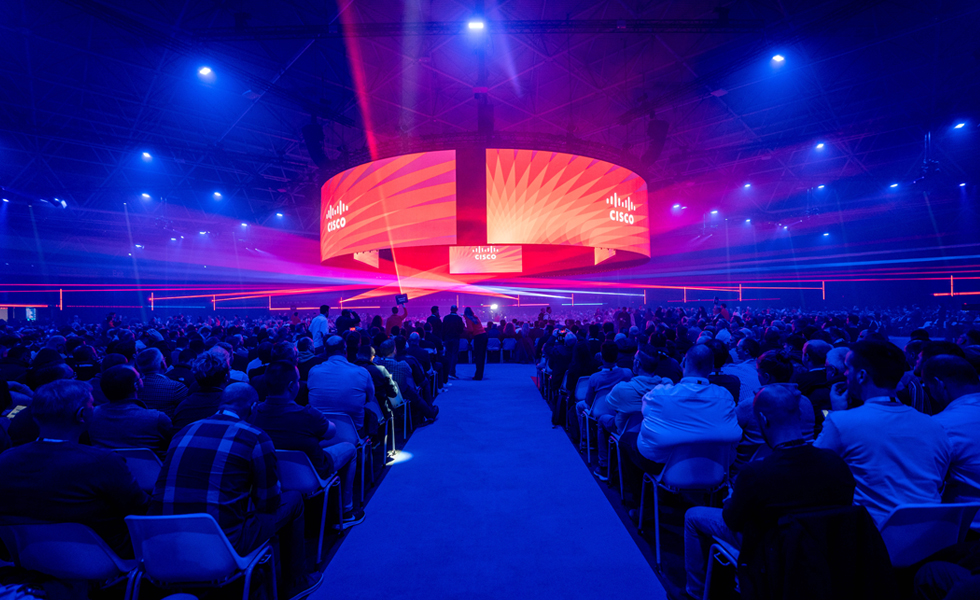The Spring 2022 season marked a new era for the events industry. After learning to meet virtually despite a global pandemic, followed by the gradual pivot to hybrid experiences in 2021, in-person events made a triumphant comeback in the first half of 2022.
And we saw event technology follow suit. Exciting new tools emerged at lightning speed, such as contactless check-in and on-site badge printing. Webex Events (formerly Socio) is a great example of how a time of such uncertainty resulted in incredible innovation. Once a platform that primarily powered in-person events through a mobile app, we have evolved to now support multiple event formats seamlessly.
Event planners understand the power of expanding their conferences, events, and expos beyond the confines of the physical event space, so we know virtual events are here to stay.
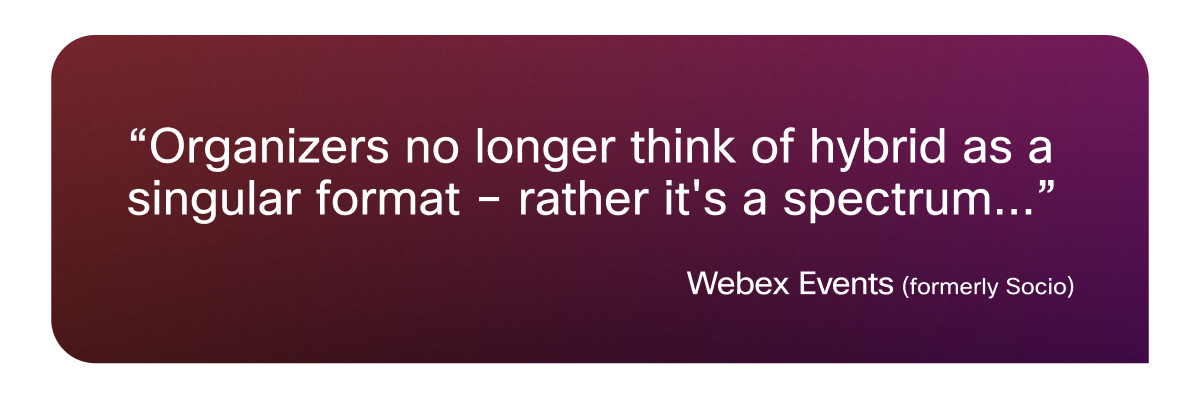
The most notable trend over Spring 2022 was the shift in focus to the attendee journey. Organizers no longer think of a hybrid event as a singular format – rather it’s a spectrum where event professionals mix and match the in-person and virtual elements to best fit their vision and support their unique audience.
Before looking to the future, it’s important to reflect on the past. When I think about the Spring 2022 season, the following takeaways come to mind.
Spring 2022 saw an equal mix of event formats
Our Spring 2022 customer data showed an almost even split between virtual, hybrid, and in-person events. But it really shouldn’t come as a surprise as in-person and virtual events each offer unique benefits, while hybrid combines the best of both worlds.
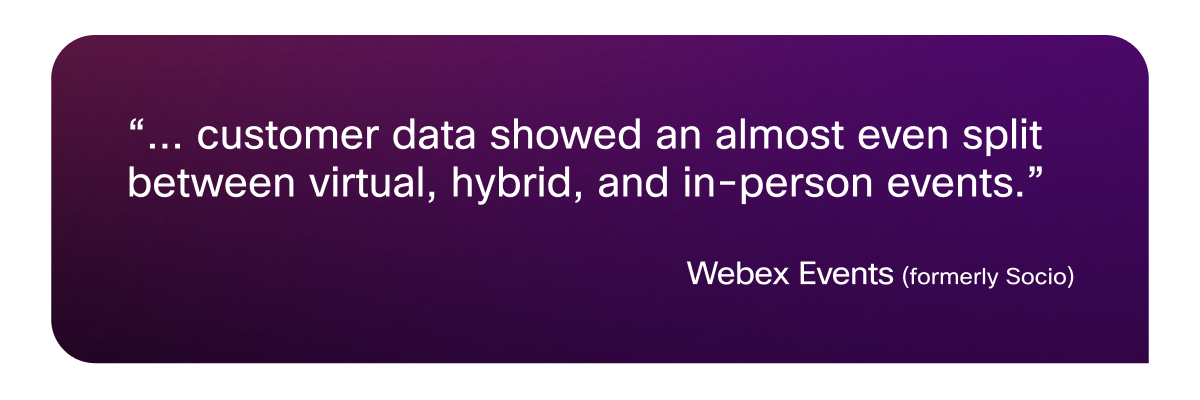
First and foremost, event planners now fully realize all the value virtual events bring to their organization. Historically, they needed to pay for food and beverages, hotels, entertainment and transportation, not to mention paper and printing costs. With virtual events, planners can potentially save tens of thousands of dollars or reinvest their budget to upgrade event technology, all while growing their audience and improving event accessibility.
Meanwhile, hybrid events offer enhanced flexibility, reach, ROI — and in my opinion — better audience engagement. For example, think about a large company or member-based association with a global audience. Because of hybrid-ready event technology, organizers now enjoy the luxury to host an in-person experience in one city, while their employees, sponsors, and vendors join from their respective countries. This simply wasn’t possible a few years ago.
As much as I’ve come to love virtual events, nothing beats the thrill of attending an event in-person. And I think the industry is more than ready to return to in-person experiences. They crave the energy of the live session. They’re excited to network face to face. They’re itching to get away and experience the cuisine and culture of a new city or country. For some attendees, nothing can replace the in-person experience, and that’s okay.
Event tech integrates with health and safety measures
Throughout the 2021 events season, most in-person events required attendees to physically show proof of vaccination or present a negative COVID-19 test to enter the venue. Over the Spring 2022 season, event technology companies began partnering with third parties to integrate vaccine information into each attendee’s event profile.
Now, it’s all about automation. Simply upload your vaccination or booster information to your event platform, get verified, and then you’re good to go for the remainder of the event. It not only improves event accessibility and inclusion by providing a safe event experience, organizers no longer need to manually check vaccine cards, a process that will only become more burdensome as large-scale in-person events come back into play.
Intimate, more frequent events gain popularity
Even before the pandemic started, we noticed organizers were increasingly planning smaller trade shows or one-day regional conferences in place of multi-day events. They can prove more beneficial for attendees, as they offer highly targeted networking opportunities, while organizers can fine-tune their content to a single topic or solution.
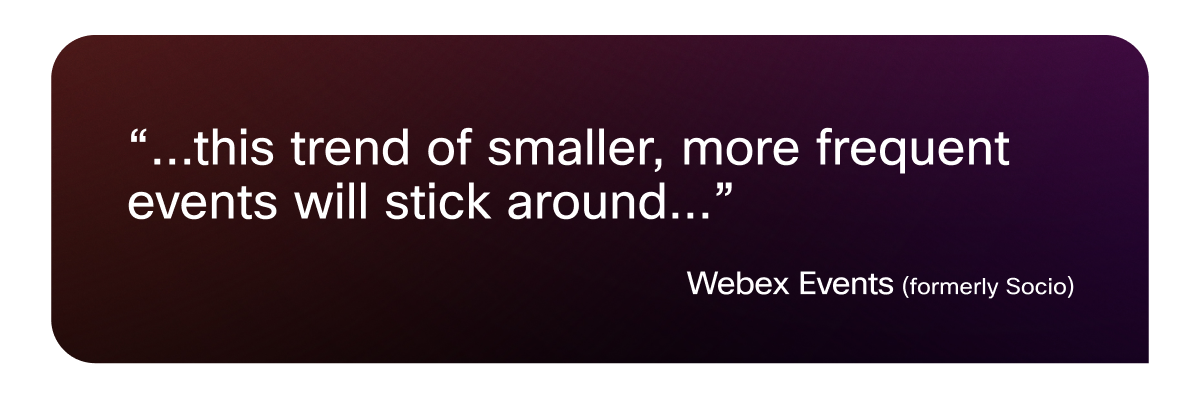
When the industry pivoted to virtual in 2020, shorter event formats quickly proved critical to keeping virtual attendees engaged while juggling the distractions of home. Organizers also realized the lower cost and shorter lead time of planning virtual events allowed them to host events more frequently, now a key part of their event communities and year-round engagement strategies.
Even as we return to in-person, I believe this trend of smaller, more frequent events will stick around as the future of events is all about targeted messaging, targeted audience, and targeted networking.
Popular event tech features
We’ve seen tremendous growth in event technology over the past few years. As I mentioned previously, we’re now in a new era of events where organizers are focusing on using event technology to up level the attendee experience. Check out some of the top event tech and tools of the Spring 2022 events season:
End-to-end solution: After the uncertainty of the last few years and considering how most future events will include multiple formats, event organizers need the flexibility to run all event types on one platform, no matter virtual, hybrid, or in-person. With an all-in-one event platform, attendees can choose in-person or virtual at registration and based on their selection, the platform maps out a unique attendee journey.
Pre-recorded and video-on-demand: Despite the advancements in streaming, organizers found peace of mind and minimized production mishaps by mixing pre-recorded video into the live production. Event technology now allows you to pre-record your event content in advance and schedule it to go live any time during your programming.
We also saw an increase in organizers making their event content available on-demand for hybrid and in-person attendees. The trend started with virtual events, but organizers now understand the value, improved accessibility, and marketability of enabling attendees to experience all event sessions.
Contactless check-in and badge printing: What better way to minimize COVID-19 concerns than to offer completely touchless check-in and badge printing? We saw a massive spike in organizers deploying these technologies during the Spring season. Attendees simply need to scan a QR code on their phone and then pick up their badge from a printing station. No touching required.
Elements of virtual to stick around
Virtual events offer several benefits to organizers and attendees, and I believe the following virtual components will stick around and shape our hybrid event future.
Short and concise content: Let’s be honest: 45 minutes is the new 60 minutes. Organizers need to understand that attendees no longer expect to sit for hours on end. Focus on shorter, concise content, and include breaks to let attendees recharge and give your speakers time to prepare.
Increased reach: Virtual events open the door to attendees who otherwise wouldn’t attend due to travel and cost barriers. Expect organizers to include a virtual component in most events to grow their attendance and revenue, while increasing event accessibility.
Content at your fingertips: Event organizers will increasingly make event content available on-demand, even for in-person attendees. With all event content at their fingertips, attendees never need to choose one session over another.
Cost savings: From saving on printing costs and venue rentals, to planning shorter, more frequent events, organizers will continue to implement cost-saving measures when applicable.
Looking to the summer and fall event seasons
As we move through the summer and fall event seasons, it’s important to note that attendees still feel some apprehension about traveling and interacting in large groups. I believe enhanced safety measures like seamless vaccine verification and contactless check-in and badge printing will increasingly put attendees at ease. As a result, we’ll likely see a massive uptick in hybrid and in-person events.
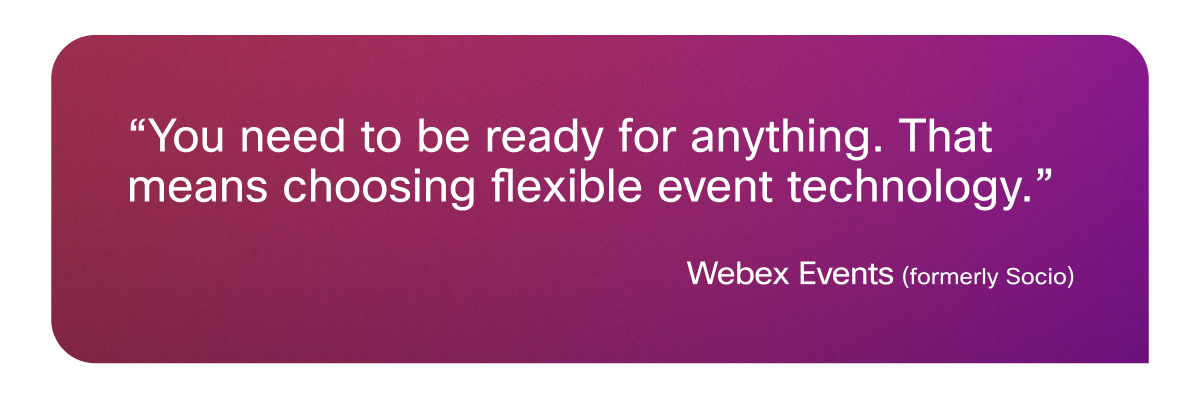
Of course, the future remains uncertain. We could see another spike in cases, and the industry could revert back to strictly virtual events. You need to be ready for anything. That means choosing flexible event technology. Just remember to do what you already do best: Plan, plan, and plan ahead.


